What to Expect When Hooking a Tuna
Imagine the sudden weight, the screaming reel, and the adrenaline rush that floods your body when a tuna strikes your line. Hooking one of these powerful pelagic predators ranks among fishing’s most electrifying experiences. Unlike catching typical inshore species, connecting with a tuna—whether it’s a yellowfin, bluefin, skipjack, or albacore—triggers a battle of strength, endurance, and technique that can last hours. These torpedo-shaped speedsters can weigh anywhere from 20 pounds to over 1,000 pounds, and they’ll test both your gear and resolve.
This article prepares you for what happens when that magical moment arrives and a tuna decides your offering is worth eating. From the initial strike to landing techniques, we’ll explore the physical, emotional, and technical aspects of one of sportfishing’s greatest challenges.
The Unmistakable Strike

When a tuna hits your bait or lure, there’s rarely any doubt about what’s happening—it’s not the tentative nibble of a curious fish but the decisive attack of an apex predator. The initial strike often comes as a violent jolt that can nearly rip the rod from unprepared hands, especially with larger specimens.
If trolling, you’ll typically hear the reel’s drag screaming as line peels off at an alarming rate, sometimes creating a distinctive “zinging” sound that experienced anglers recognize immediately. Surface strikes are even more dramatic, as tuna often crash baits with explosive force, sending water spraying and leaving a boiling slick where they’ve attacked. This moment represents the culmination of hours or even days of preparation, and marks the beginning of what could be one of fishing’s most memorable battles.
The First Run – Hold On Tight

The first run after hooking a tuna is legendary among offshore anglers for its sheer power and speed, with larger specimens capable of stripping hundreds of yards of line in mere seconds. This initial burst often takes anglers by surprise, as even smaller tuna species can accelerate to over 40 mph when frightened or hooked. During this critical phase, maintaining proper drag tension becomes essential—too tight and you risk broken lines or pulled hooks, too loose and the fish may create slack or tangle your line during its run.
Many experienced captains advise letting the fish run until it slows naturally rather than trying to stop it prematurely, which could result in equipment failure. This first powerful rush serves as a humbling reminder of the incredible swimming power these open-ocean predators possess, developed through evolutionary adaptations for high-speed pursuit across vast distances.
Physical Demands on the Angler
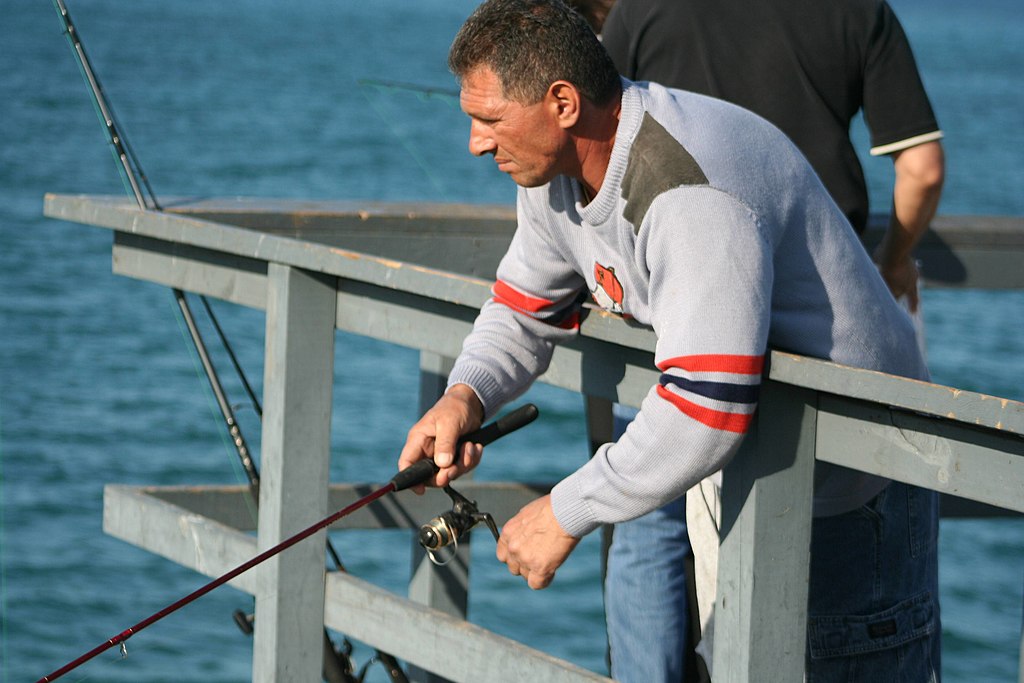
Fighting a tuna will subject your body to stresses that few other fishing experiences can match, requiring physical preparation and proper technique to prevent injury. The constant pressure against heavyweight tackle places tremendous strain on your back, shoulders, arms, and core muscles, with battles often lasting between 20 minutes and several hours depending on the fish’s size. Dehydration becomes a serious concern during extended fights, especially in tropical conditions where many tuna species are targeted.
The combination of adrenaline, physical exertion, and exposure to elements can quickly deplete energy reserves, making it essential to maintain proper nutrition and hydration before and during offshore trips. Experienced tuna anglers often engage in specific conditioning exercises months before planned expeditions, focusing on building endurance in the muscle groups most taxed during prolonged fish fights.
The Sounding Phase
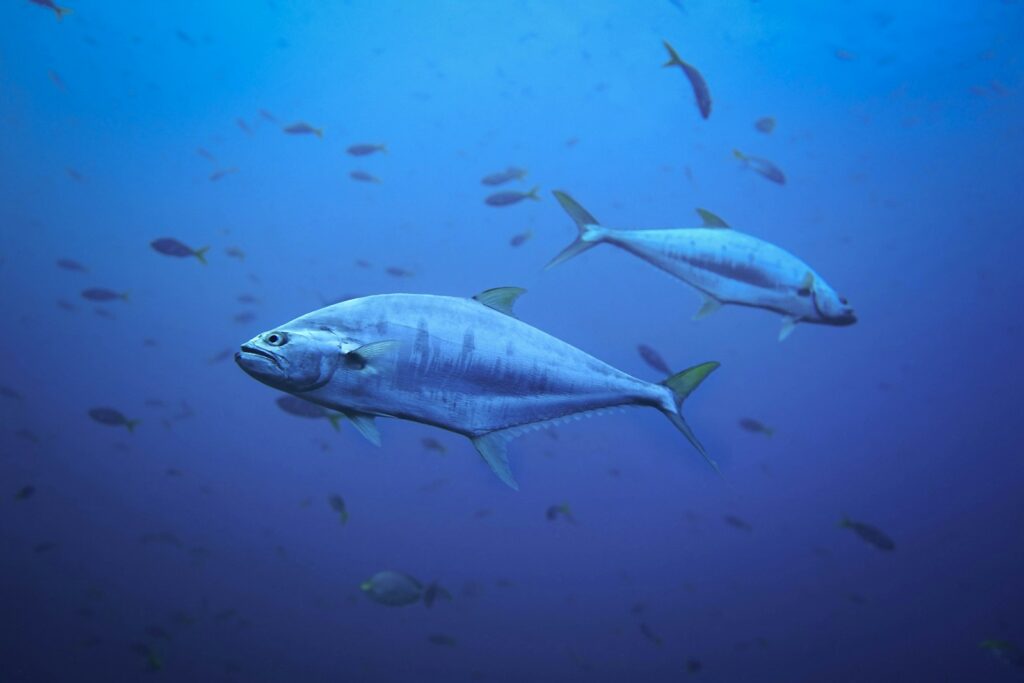
After the initial run, many tuna, particularly larger specimens, will “sound” by diving deep—a defensive strategy that leverages their weight against the angler’s upward pressure. This vertical movement can be particularly challenging as the fish uses depth to its advantage, forcing you to lift its substantial weight plus the resistance of the water column.
When a tuna sounds, rod positions must change from the horizontal fighting stance to a more vertical position, allowing proper leverage against the downward pull. During this phase, the battle often shifts from one of speed to one of endurance, with the fish conserving energy while testing the angler’s stamina and determination.
Experienced tuna fishermen prepare for this phase by maintaining steady, rhythmic pressure rather than attempting to muscle the fish upward, which would quickly exhaust even the fittest angler’s strength reserves.
Circle, Dive, Repeat – The Mid-Fight Pattern

Once past the initial shock of being hooked, tuna typically settle into a pattern of circular runs interspersed with deep dives that can test an angler’s patience and technique. This phase of the fight demonstrates the tuna’s remarkable stamina, as they can maintain strong resistance for extended periods thanks to their unique physiology, which includes higher body temperatures than the surrounding water.
The circular swimming pattern allows the fish to use the boat as a pivot point, maintaining constant pressure while expending minimal energy. During this phase, boat positioning becomes crucial, with experienced captains maneuvering to prevent the line from rubbing against the hull or being cut by propellers.
The angler must stay alert during these movements, adjusting rod position constantly to maintain proper pressure while avoiding dangerous angles that could snap lines or leaders.
The Color Change – Signs You’re Winning
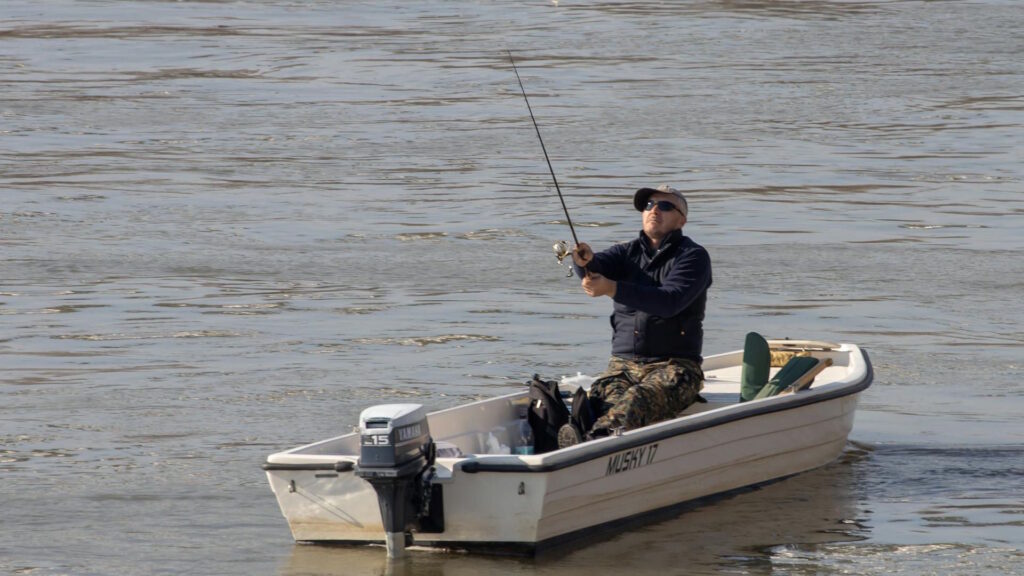
As the battle progresses and the tuna begins to tire, observant anglers will notice a distinctive color change in the fish as it nears the surface—a phenomenon often called “lighting up” in sportfishing circles.
This visual transformation, where the tuna’s normally dark blue back brightens to electric blue, silver, or even golden hues, signals that the fish is approaching exhaustion and the endgame is beginning. The color change results from stress-induced physiological responses and represents a critical transition point in the fight where many anglers lose fish by becoming overly excited or rushing the final stages. Along with this visual indicator, the tuna’s movements typically become more erratic and less powerful, with shorter runs and less aggressive dives.
Experienced anglers recognize these signs as cues to maintain steady pressure without giving the fish any opportunity to regain energy through slack line.
Boat-Side Chaos – The Most Critical Moment
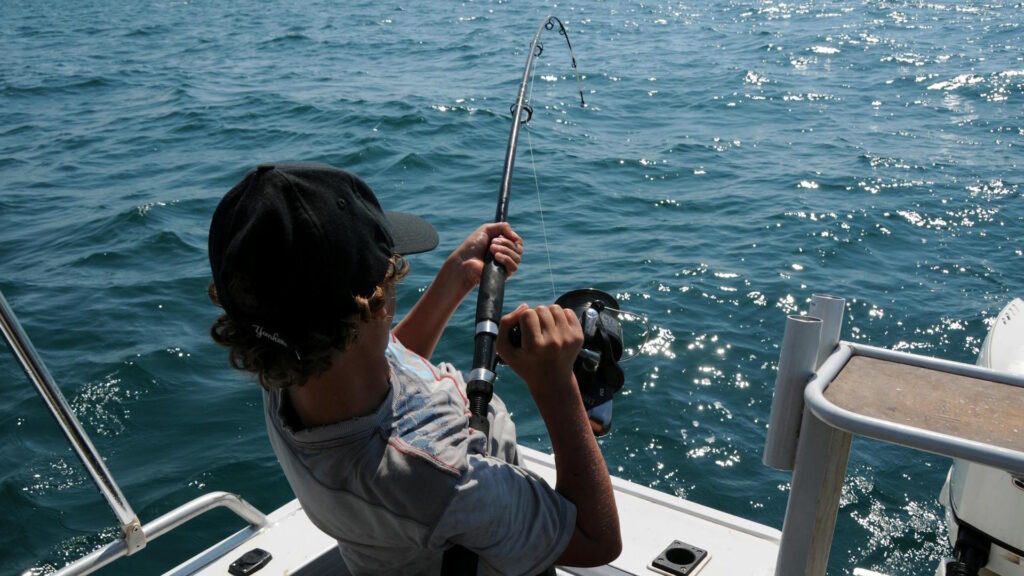
The final moments when a tuna comes boat-side represent the most dangerous phase of the entire encounter, both for successfully landing the fish and for crew safety. Many tuna are lost in these critical seconds when they spot the boat and make one last desperate surge, often their most powerful since the initial run. This “sight surge” can catch unprepared anglers off guard, resulting in broken leaders, straightened hooks, or worse—injuries to crew members positioned for the gaff or tag stick.
Proper coordination between the angler, captain, and crew becomes essential, with clear communication about when to approach the fish and from which angle. The gaffer or tagger needs to be experienced enough to time their approach perfectly, avoiding premature attempts that could spook the fish while not hesitating when the opportunity presents itself.
Specialized Equipment Considerations

The tremendous force exerted when fighting tuna demands specialized equipment designed specifically to handle their unique combination of speed, power, and endurance.
Standard drag systems found on conventional reels often prove inadequate for larger tuna species, leading serious anglers to invest in two-speed reels that provide different gear ratios for various fighting phases.
Rod holders require reinforced mounting and construction to withstand the immense pressure when tuna strike while trolling, as many boats have suffered structural damage from inadequate setups. Leader materials deserve particular attention, with many experienced captains preferring fluorocarbon for its abrasion resistance and near-invisibility underwater, especially in clear offshore waters where tuna have excellent vision.
Hook selection also becomes critical, with specialized tuna hooks featuring reinforced designs that resist bending or breaking under extreme pressure while maintaining proper penetration through the tuna’s tough jaw structure.
The Psychology of Endurance
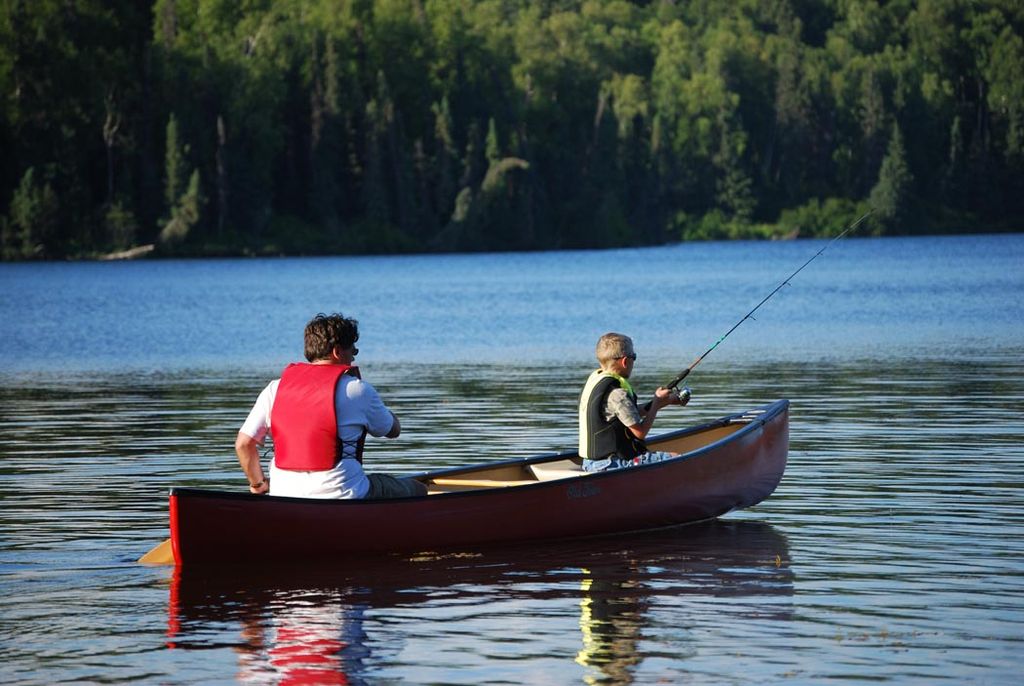
Beyond physical demands, hooking a tuna initiates a mental challenge that tests an angler’s patience, determination, and emotional control throughout what can become an hours-long battle. The psychological roller coaster begins with the elation of the initial hookup, followed by potential frustration during extended fighting periods when progress seems minimal or nonexistent.
During prolonged fights, anglers often experience periods of doubt and fatigue-induced negativity, questioning whether landing the fish is even possible as muscles burn and energy reserves deplete. Maintaining mental focus becomes increasingly difficult as the fight extends, with concentration lapses potentially leading to costly mistakes like momentary slack line or improper rod positioning.
Experienced tuna anglers develop mental discipline through repeated encounters, learning to pace themselves emotionally just as they do physically, celebrating small victories like gaining line while preparing mentally for the inevitable setbacks that occur during epic battles.
Landing Methods and Safety Considerations

Successfully bringing a tuna aboard requires careful planning and execution with specific techniques varying based on the fish’s size and your intentions for the catch.
For smaller tuna under 50 pounds that will be kept for consumption, traditional gaffing methods using properly sized gaffs with secure handles prevent the fish from escaping at the last moment. Larger specimens destined for release should never be removed from the water completely; instead, they should be controlled alongside the boat using gloves or a lip-grip device while hooks are removed and measurements taken. Tag-and-release operations require specialized tag sticks that can place identification markers quickly and accurately while minimizing stress to the fish.
Safety protocols must be strictly followed during landing, as the combination of sharp hooks, gaffs, thrashing fish, and excited crew members creates numerous hazards including potential lacerations, puncture wounds, and even crew members being pulled overboard by powerful fish.
Post-Release Behavior and Conservation
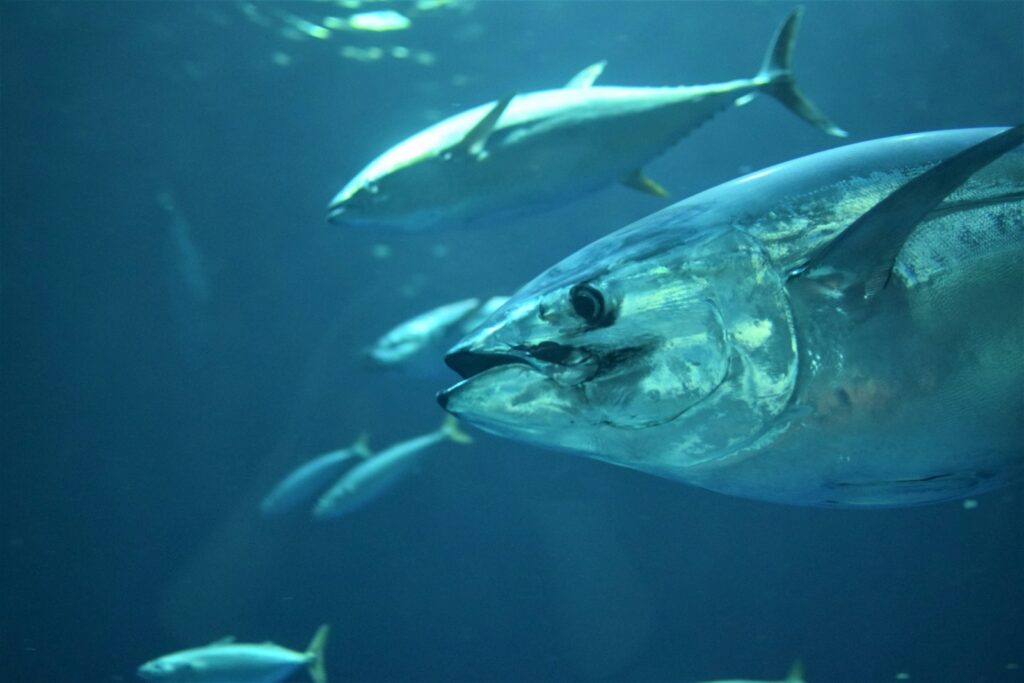
Understanding what happens after releasing a tuna has become increasingly important as conservation ethics have gained prominence in sportfishing communities worldwide. Research using pop-up satellite archival tags has revealed that properly handled and released tuna generally recover quickly from the stress of capture, resuming normal swimming patterns and feeding behavior within hours under optimal conditions. Water temperature plays a significant role in post-release survival rates, with fish fought in warmer waters experiencing higher mortality due to lactic acid buildup and oxygen depletion in their tissues.
Responsible anglers now incorporate specific release techniques including minimizing fight times, using circle hooks that typically catch in the corner of the mouth rather than being swallowed, and employing proper revival methods before release. Conservation-minded tuna anglers also recognize the importance of participating in tagging programs that provide scientists with valuable data about migration patterns, growth rates, and population dynamics of these commercially important species.
The Aftermath – Processing Your Catch
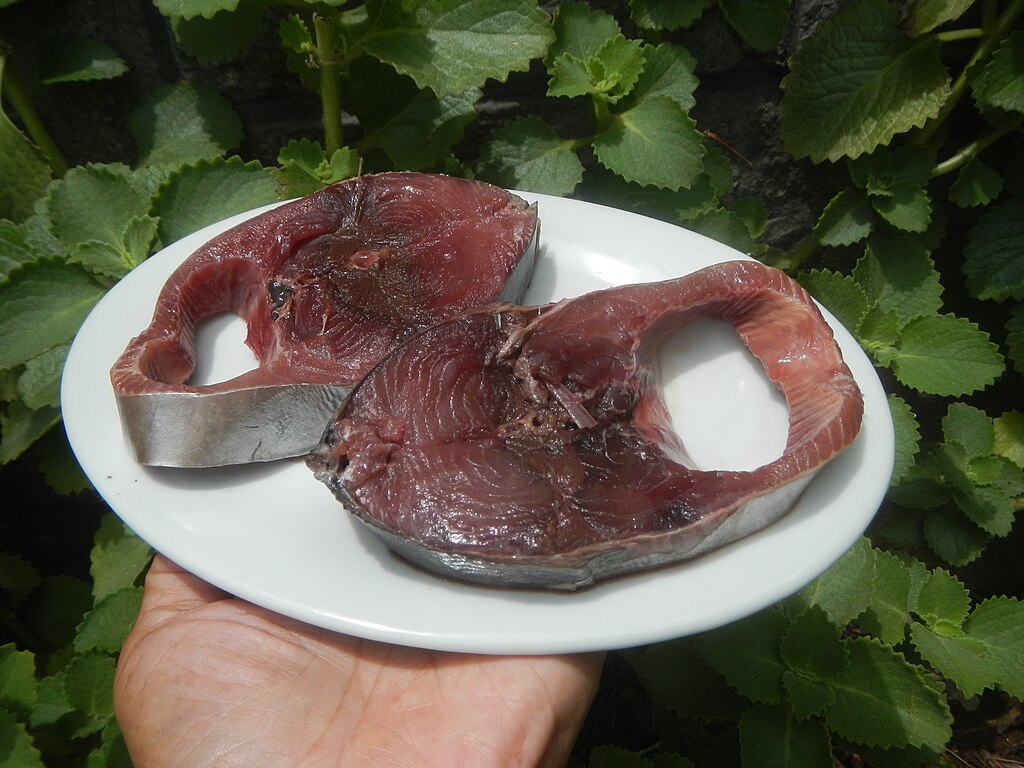
If you’ve decided to harvest your tuna, proper handling immediately after landing becomes crucial to preserving the exceptional quality of its meat. Unlike many fish species, tuna require immediate bleeding by cutting the gill arches or the artery behind the pectoral fin, followed by immersion in an ice slurry to rapidly reduce core temperature. This process prevents the breakdown of flesh quality caused by the tuna’s naturally elevated body temperature, which can quickly degrade meat if not addressed promptly.
Proper filleting techniques for tuna differ significantly from those used for other game fish, requiring sharp, specialized knives and knowledge of the different meat grades found throughout the tuna’s body. The highly prized belly meat (toro) commands premium prices in seafood markets for its rich flavor and buttery texture, while the leaner back meat offers excellent steaking options with its firm, deep red coloration. Vacuum-sealing portions immediately after processing helps maintain quality for extended periods when properly frozen.
Stories That Last a Lifetime
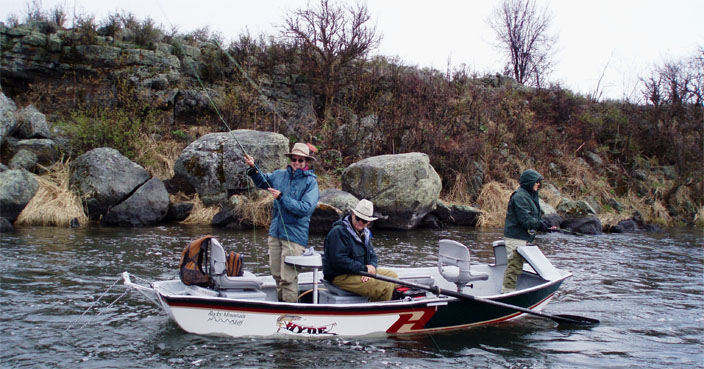
Perhaps the most enduring aspect of hooking a tuna comes in the memories and stories created through these encounters, which often become defining moments in an angler’s fishing career. The shared experience of witnessing a fellow angler’s determination through a grueling fight creates bonds among fishing companions that transcend ordinary friendship.
Many tuna anglers can recall with remarkable detail fights that occurred decades earlier—the weather conditions, the exact location, the lure or bait presentation, and especially the emotions experienced throughout the battle. These stories gain elements with each retelling, sometimes stretching into fishing lore that inspires the next generation to seek their own epic encounters.
The photographic evidence of these achievements, especially the iconic “fish lift” shots with exhausted but triumphant anglers, often occupies prominent places in homes and fishing lodges, serving as tangible reminders of moments where human determination met one of the ocean’s most formidable adversaries.
Conclusion
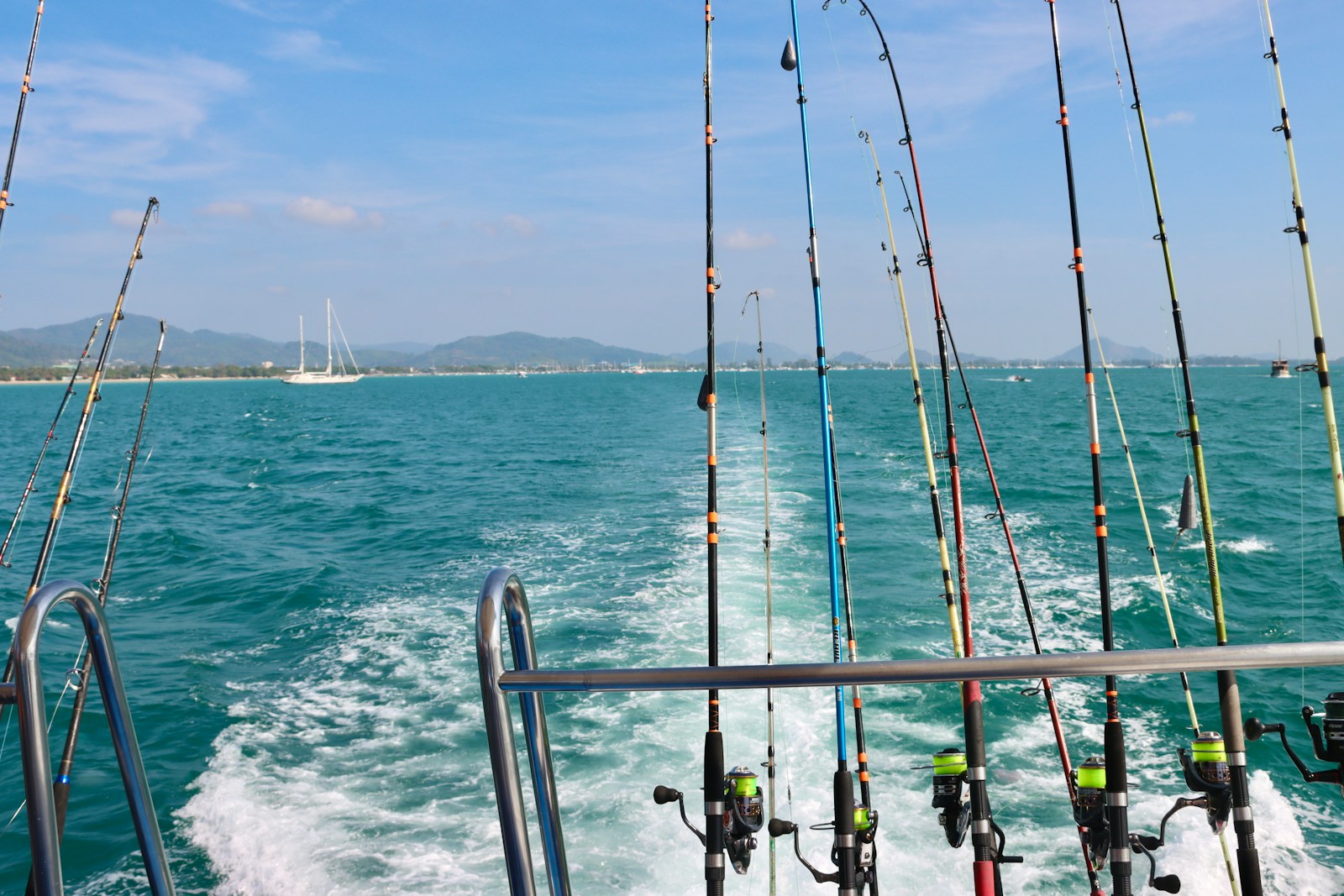
Hooking a tuna represents one of sportfishing’s ultimate challenges—a full-body, full-mind experience that tests equipment, technique, and human endurance in equal measure. The encounter transcends ordinary fishing, becoming a primal connection to something wild and powerful in an increasingly controlled world.
Whether you’re an experienced offshore angler or someone dreaming of your first big-game fishing adventure, understanding what to expect when that line goes tight can help prepare you for the physical demands, technical challenges, and emotional roller coaster that follows.
And while no article can fully capture the heart-pounding reality of watching your rod bend double as a tuna strips line against a screaming drag, being mentally prepared for what comes next might just make the difference between the fish of a lifetime and the one that got away.
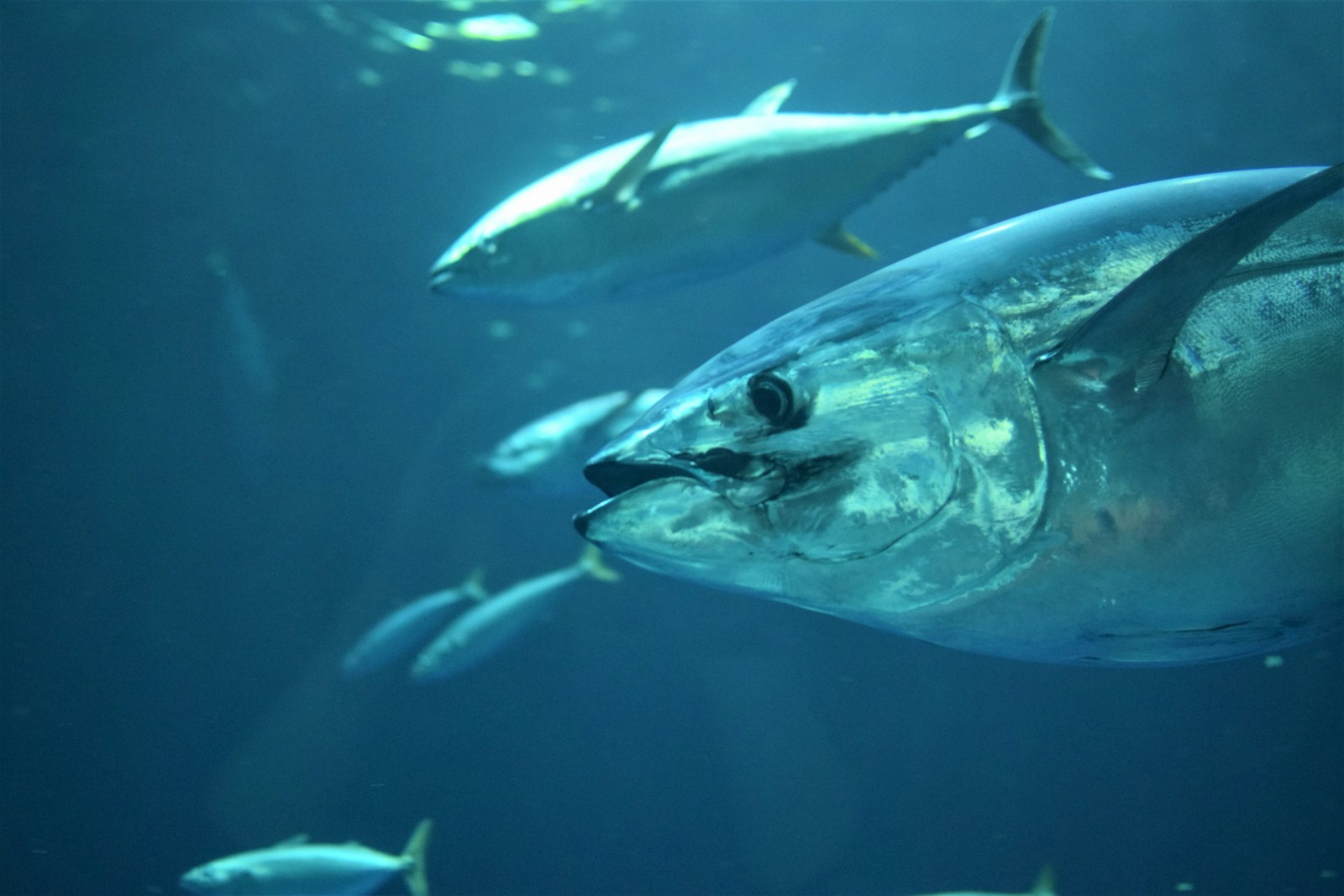













Post Comment